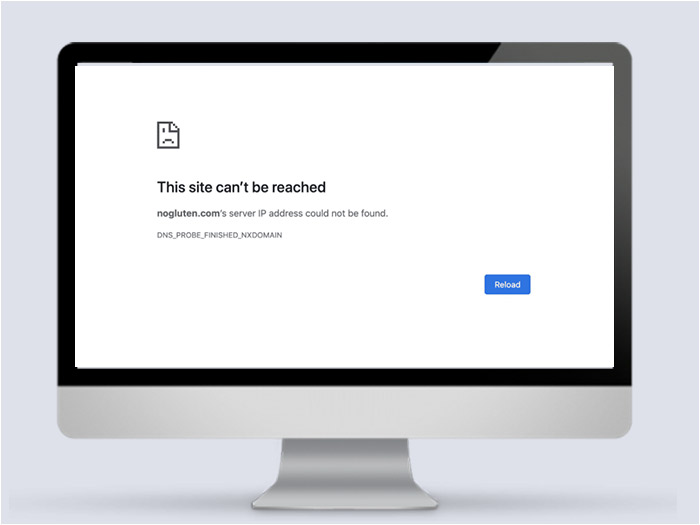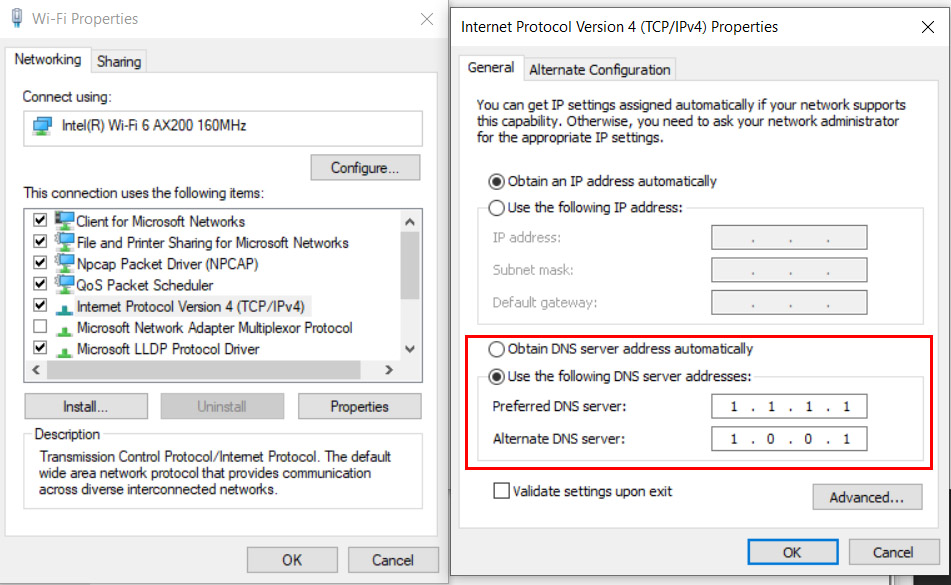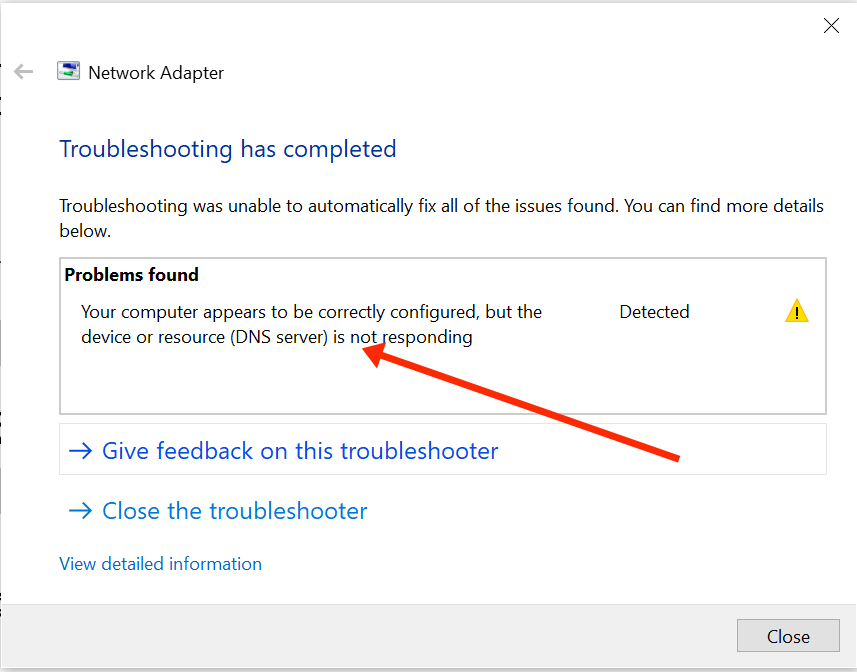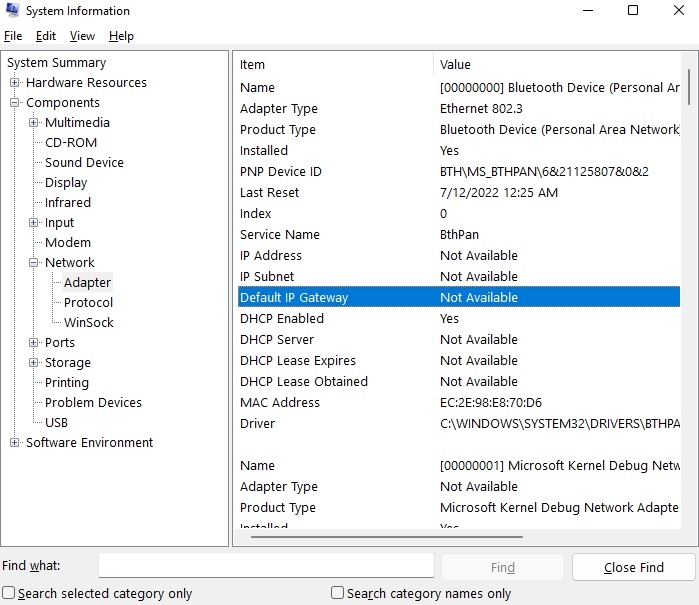How to Fix DNS Probe
Finished No Internet
Suppose your internet is displaying you the DNS probe finished with no internet issues. In that case, this means that it is not browsing or is unable to identify a dynamic name server that will guide you to the website which you are looking for on the network. The problem with the DNS probe concludes that no internet could be brought on by losing your internet connection. It is not only with one website; different VPNs or new routers may also face this problem. The issue is that it frequently appears out of nowhere, sometimes seems to be going away on its own, and then reappears a little while (or even days) later.
The most straightforward fix was often to change the DNS address on the device you are using, but a few users complained that it did not work as well. Let’s examine some of the root reasons for this problem (the DNS probe came to an end without the Internet) and possible solutions.
Does it happen to browsers only?
The only browser that periodically offers the DNS probe finished no internet issue was Chrome; all other browsers, however, had no trouble connecting to the internet. This could happen if the browser needs to clear its cache because of an incorrect allocation of RAM. Of course, there are a ton more options, but this is the most effective, especially with the widely used Google Chrome.
Have you ever experienced a DNS probe finished no internet error on a single hardware? If all your browsers are affected, then clearing the cache will not help because this DNS probe finished no internet error. It is now probably related to the network adapter and its configuration. It may be true because if other devices that are connected to Wi-Fi or ethernet cable are working perfectly, pinging a hostname is the first action to resolve this error.

How to make your Google Ping?
Pinging from your PC, which you can achieve with a Windows operating system gadget by sending off an Order brief (enter cmd into the pursuit bar and press Enter), trailed by composing ping google.com. Assuming you notice 0% misfortune, everything is all together. Alternatively, if the data cannot be transferred or received, you must ping the IP address. Send a ping to 8.8.8.8 on the off chance that the information effectively relaxes. You have a DNS server issue, and you’ll have to change some organization connector settings to determine DNS probe finished no internet issue.
Another step to resolve the DNS probe is to change your DNS Server.
Since you are actually utilizing a Windows operating system PC, adhere to these guidelines to change the DNS server that your PC utilizes, in order to troubleshoot DNS probe finished no internet issue, follow the steps below:

Step 1: Press on Organization and Web from the Settings menu (type settings into the inquiry bar).
Step 2: Next, select Change adapter settings and select Ethernet or Wi-Fi as your network type.
Step 3: Select Properties by doing a right-click on the organization.
Step 4: Make sure that the “Obtain DNS server address automatically” checkbox is checked by double-clicking Internet Protocol Version 4. Try allowing the DNS to come from the router if that fails.
If it does not work, you have to choose ‘use what to follow DNS’ and enter a DNS server that is accessible to the public, like 8.8.8.8 for the primary server and 8.8.4.4 for the backup server.
Verify whether the switch keeps this gadget from getting to the web.
The machine having this issue as of now has its Web access confined at the switch level. In this event you or another person laid out no principles for the gadget associations or failed to remember about it, it merits checking whether it might result from a Parental Controls profile or an organized admittance.
Erroneous DNS Servers
The router and modem routers you get from your ISP regularly show up pre-designed, and one of their activities is set on their DNS. In spite of the fact that they represent everybody, numerous clients gripe that these DNS probe finished no internet issues are slow and that DoH needs to be upheld, leaving the information decoded.
Some ISPs sell client information, yet nobody ought to be stunned. In this way, the other DNS should be utilized, which requires changing your switch’s settings.
To access the web-based interface, enter the username and password, followed by the IP address 192.168.1.1.
Scroll downwards until you find the Area Name Server (DNS) Address under Essential > Web.
You could do it without the Get Naturally from the ISP setting; that is the default. Therefore, we ought to select the Use These DNS Servers choice.
Enter the DNS that you prefer. It may very well be OpenDNS (208.67.222.222 and 208.67.220.220), Cloudflare’s DNS (1.1.1.1 and 1.0.0.1), or Google’s DNS (8.8.8.8 and 8.8.4.4).

After that, try the malicious router.
Now and again, it’s simply the routers, and it has nothing to do with you or your gadgets. In this way, a straightforward restart may determine the issue. In the event that this doesn’t work, you might have to upgrade the firmware or, in the most pessimistic scenario, reset it to its factory default settings.
You should look into what’s occurring between the router and the ISP if this doesn’t fix the problem. A cable or modem issue might be at blame. The latter could be fixed with a restart.

Is it a Wi-Fi issue?
Error DNS PROBE FINISHED NO INTERNET is a possibility with Wi-Fi connections. Ethernet cable connections, however, can provide a flawless Internet connection. This suggests that even though you have a Wi-Fi connection, your Internet access is somehow restricted. I would also reset the network device and double-check the drivers in addition to restarting the computer.
After doing a Device Manager search, choose the Network adapters option from the list of results to confirm the driver’s functionality. When you select the Wi-Fi adapter, you will often see a yellow exclamation mark there if there is a problem.
Even if everything seems to be in order, updating the driver is always possible by double-clicking before selecting a driver. In the worst-case scenario, you can remove it and restart the computer, and Windows should reinstall it automatically, maybe fixing any underlying issues.
Conclusion:
The blog has shared information on how the DNS probe finished no internet. You can go through these points and resolve this issue. In case your error still needs to be fixed, you can call our experts anytime. Our experts will guide you to the solutions that will help you instantly. Thus, get our expert assistance today to resolve your errors.
FAQ:
1. What does a completed DNS probe mean?
When there is a DNS (Domain Name System) resolution issue, you could get the message “DNS probe finished” in web browsers. It denotes that the browser made an attempt to search for a website’s IP address using DNS, but the effort was unsuccessful. This may happen for a number of reasons, including a DNS server that is not configured correctly, issues with network connectivity, or errors with the DNS records for the website.
2. What does DNS no internet mean?
“DNS no internet” often means that DNS-related problems are the cause of your device’s inability to connect to the internet. This prevents your device from accessing web pages or other online resources because it is unable to translate domain names into IP addresses. Network connectivity difficulties or incorrect DNS server settings are two possible causes of this issue.
3. Why do DNS queries fail?
There are several potential causes of DNS problems, including:
- Incorrect DNS server configuration on your device.
- DNS server issues with your Internet service provider (ISP).
- Issues with network access, including a poor Wi-Fi signal or network congestion.
- DNS server problems or problems with the DNS records of the website.
- DNS resolution is being interfered with by malware or security software.
4. Why is my Wi-Fi on, but I can't access the internet?
There are a number of reasons why you might not have internet access even when your Wi-Fi is connected, including:
- DNS problems: It’s possible that your device can’t translate domain names into IP addresses.
- Problems with your router or modem might indicate a problem with your networking hardware.
- Your Internet Service Provider may be having outages or other troubles.
- High network traffic might slow down or interfere with your internet connection due to network congestion.
- Firewall or security settings: Some security programs may prevent access to the internet.
5. How long do DNS mistakes persist?
Depending on the root reason, DNS problems might last anywhere from seconds to weeks. By renewing your DNS cache or altering your DNS server settings, you may rapidly fix specific temporary DNS issues. Others may be brought on by persistent problems with your ISP or the DNS setup of a particular website, and these may persist until the underlying issue is fixed. It’s suggested to ask your ISP or network administrator for help if you consistently get DNS issues.
